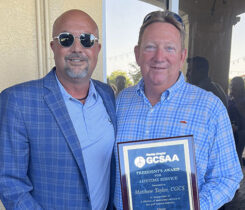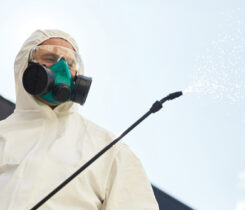2022 State of the Industry: The boom goes on
After the third straight season with packed tee boxes across the country, you can finally drop the “new” from the new normal. Courses are packed everywhere, and that’s normal now.
For the 2022 State of the Industry report, sponsored by Nufarm, the Golfdom team reached out to Golf Course Superintendent Association of America (GCSAA) affiliated chapter presidents across the country to get a report on this past golf season.
This year, we heard more positivity concerning the ever-present labor shortage. The First Green program — a STEM education outreach program for school children that brings youngsters face-to-face with superintendents — was mentioned often and with great enthusiasm. Course conditions were exceptional in many areas, with favorable weather for growing and maintaining fine turfgrass. And we heard from multiple sources that golf construction projects — even formerly closed courses springing back to life — were popping up regularly.
“This past year was a great golf season,” Tami Jones, president of the Arkansas GCSA, told us. “We are still seeing high numbers of players and new faces on the course, which is great to see.”
We couldn’t agree more. Read on for our recap of what was a great golf season.
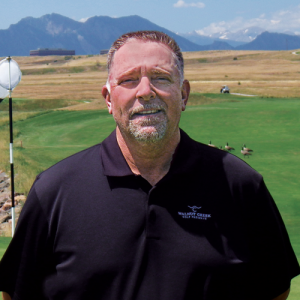
(Photo: Paul Sibley)
Paul Sibley
President, Rocky Mountain GCSA
Superintendent, Walnut Creek Golf Preserve, Westminster, Colo.
How was this year’s golf season in your region?
Golf in our region was very good. Tee times were mostly booked on a daily basis throughout the season, with an occasional twilight time available. Our facility has been going through an irrigation renovation this year, and it really hasn’t slowed down much.
How was the weather in your area?
The weather along the Front Range of Denver was dry with limited moisture events. For Colorado, this was the sixth warmest in the 127-year record and the 35th driest. In months where we normally see moderate seasonal temperatures, November, December, July and September, conditions were warm. November and April typically will be good months for moisture, and they were rather dry months. In speaking with colleagues from Fort Collins down to Colorado Springs, we all seemed to be in the same situation and struggled a bit through the heat of summer.
What was the labor pool like this year?
Labor was a tough one this year. Most, if not all, superintendents spoke about the problems they had hiring enough staff to get them through the entire season. Most courses in Colorado hire seasonal staff consisting of high school and college students. Usually, we are not getting staff on-boarded until late May, and they go back to school in mid-to-late August. Personally, I only had 14 seasonal and four full-time staff to cover us through the summer.
Any notable success stories for your chapter or region this year?
The 2022 Colorado State Legislative session saw the introduction of Colorado Senate bill 22-131. This bill aimed to restrict pesticide use in a number of ways, but the most concerning was a section in the bill that would have allowed local governments to “regulate the use and application of pesticides… if the use was not for agricultural products.”
The RMGCSA, along with the Colorado Golf Coalition (Colorado Golf Association, PGA Colorado Section and the Mile High Chapter of the Club Managers Association) as well as Coloradans for Responsible Pesticide Application collaborated on how to approach the legislation. In early March, five RMGCSA superintendents representing the coalition participated in seven hours of testimony in front of the Colorado Senate Agriculture Committee that generated questions from committee members and allowed us to discuss the many benefits that golf provides to communities and the environment. Testimony given by the RMGCSA members, as well as a plethora of industry experts and scientists saw the bill get defeated by a 6 to 1 vote.
What are your expectations for 2023?
Warm, dry, and a lot of golf being played!
— Christina Herrick
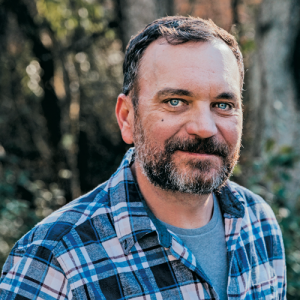
(Photo: Rodney Robbins)
Rodney Robbins
President, Central Ohio GCSA
Superintendent, CC at Muirfield Village
How was this year’s golf season in your region?
I think it’s still very strong overall. We’ve probably come off of the peak of COVID as far as rounds played, but most private clubs in our area are full. The public courses are printing money — they’re running from daylight to dark, so I think it’s still pretty healthy.
How was the weather in your area?
Central Ohio had a pretty average summer. We had some droughty stretches, and we had a wet spring, but overall, it was very normal. We had a normal fall — a little dry, but that’s kind of typical.
What was the labor pool like this year?
I was probably an anomaly from most of the guys. In the Columbus area, there are a lot of people wanting to work. I’m overstaffed and over budget on labor by a lot, and the course reflects it. It looks great. I think for most of the industry standard, we’ve raised our pay scale, so we start people out at a higher wage. I think people understood that golf is a safe place to work, and they’re not going to shut you down. As far as skilled, college graduates, assistants-in-training, spray techs, interns — they don’t exist. All the top 100 clubs gobble them all up. As far as everyday help, though, the Columbus area is pretty strong.

For Rodney Robbins, superintendent at the Country Club at Muirfield Village (Ohio), the labor pool was strong, allowing him to have a full staff. (Photo: Rodney Robbins)
Any notable success stories for your chapter or region this year?
People here golf at a high level. You don’t hear of clubs closing in the area. We hear of clubs reopening. I think that shows how strong the Columbus area is. You haven’t heard that in a long time. Usually, they’ve been closing courses. I know there are two properties this year that have reopened, and a lot of properties have new ownership. People are re-investing in the clubs.
What are your expectations for 2023?
As an area and an industry, I look forward to continuing to be strong. We worry about the economy. Golf is definitely something that people will change. If the economy goes down, people might move from private clubs to public golf, but they’re still going to play golf. I think the elections are going to determine how long this boom we’re in will last. If things continue pretty well, then golf has a positive outlook. It’s tough, though. Inflation is killing us on the budgeting. Golf is strong, but it costs a lot to do at a high level.
Overall, it’s positive. I think golf is on an upward path, even with inflation and supply chain issues. The golf industry has some of the smartest people on all sides of it. We figure things out. Is it easier? No. But is it successful? Yes.
— Sydney Fischer
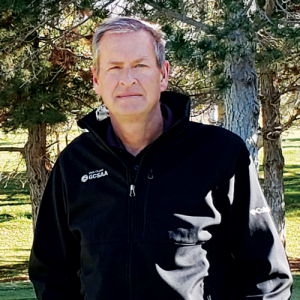
(Photo: Brian Roth)
Brian Roth, CGCS
President, Utah GCSA
Superintendent, Oquirrh Hills GC, Tooele, Utah
How was this year’s golf season in your region?
It was great. The golf boom from the pandemic is still booming. Every course I know of is either up from last year or on par with last year, which is significantly above where things were a few years ago.
How was the weather in your area?
It was OK. We had some hot patches, we did have extended periods where we hit 100 degrees. It was hot, but I don’t know that I’d call it a bad year. It almost turned out normal.
What was the labor pool like this year?
It’s an issue that a lot of guys are struggling with. I know a lot of guys who were working with shorthanded crews. It’s a tight labor market in Utah, we have 2 1/2 percent unemployment. Take a look nationally at all the assistant superintendent positions posted. I know three or four guys who spent all year trying to find an assistant. And just the general crew — some guys were half-staffed most of the year.
Any notable success stories for your chapter or region this year?
Last fall, we had our first First Green event. We did it at a good friend of mine’s course. It was a good turnout. We had the entire grade come out. It was the entire third grade, 120 kids and we divided them into two sessions. It was big, but it was a really good experience. We had another one scheduled in the spring, but then we had a weather delay, and the school had to cancel it. We’d like to do two or three in 2023. We have two or three superintendents in the chapter willing to host them.
What are your expectations for 2023?
More of the same. Play is going to stay up. The issues will again be labor, and Utah is in a historic drought, as is much of the West. If we could get a good snowpack, it wouldn’t be as impactful. But the last two years haven’t been very good. We’ve seen the legislature hint at the state looking at water use. There may be some things coming down legislatively on water use for the first time. Equipment will be an issue. With golf booming, guys want to buy stuff, and the money is there, but you can’t get it.
— Seth Jones
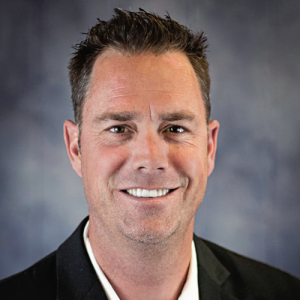
(Photo: Ryan Moore)
Ryan Moore
President, Michigan GCSA
Superintendent, Forest Lake CC, Bloomfield Hills, Mich.
How was this year’s golf season in your region?
Busy. Golf rounds that increased through 2020 and 2021 continued in the 2022 season. It seems we have recaptured the interest of the avid golfer who is now playing more, along with new golfers, as well as growing their enjoyment of the game. In the private club sector, we have seen not only increases in all membership categories but also a sustained increase in the number of golf rounds of members and their guests.

For Ryan Moore, superintendent at Forest Lake Country Club in Bloomfield Hills, Mich., 2022 brought an increase in membership and rounds. (Photo: Ryan Moore)
How was the weather in your area?
Last year was a year with a lot of rain and flooding in our area. We persistently dealt with wet course conditions. This year was different. We had some of the driest stretches of weather through the golf season, even into fall. This created fast, firm conditions with shortfalls in tree lines and non-irrigated areas. I hope that 2023 can give us a better balance.
What was the labor pool like this year?
Our club allowed us to hire more individuals for our facility at competitive wages. The struggle was finding enough employees to match our needs and individuals who would be available for our entire golf season. We hired numerous employees with no related experience, which took time to train to create a balanced staff to cover all the course responsibilities. The positive is that we expect many of them to return in 2023, which will create a nice nucleus to build on.
Were there any notable success stories from your area/chapter this year?
Despite the weather challenges and the wear and tear from the increase in rounds, the courses in our region that I had the chance to visit were in spectacular condition. This is a testament to how great the superintendents and maintenance staffs are at continually producing a great product despite their challenges. The real success is that the increased revenues generated have allowed facilities to update, improve and reinvest in their courses, so improvements have been happening in all levels of courses throughout our region.
What are your expectations for 2023?
Looking ahead, I see golf rounds continually being at 2020-22 levels and the golf course product being really good. We
will definitely experience some issues with equipment and materials held up by supply chain problems, but as always, we will overcome these obstacles as they present themselves.
— Rob DiFranco

(Photo: Damon Hitti)
Damon Hitti
Vice president, Kentuckiana GCSA
Superintendent, Weissinger Hills GC, Shelbyville, Ky.
How was this year’s golf season in your region?
Rounds are still up since COVID, so it’s been really good in that regard. We are still up, but I know since our governor did not close any golf courses, I think that really helped out the industry here. I know a lot of guys are doing projects, which means there is more money for capital projects. We’re wrapping one up ourselves. We did a complete bunker renovation, leveled our tee boxes and added some and we did some green surround areas. We went with Klingstone in our bunkers.
How was the weather in your area?
Everyone has told me, since I got here in 2013, that we haven’t had a normal year yet. Right now, we’re in the middle of a drought. At my course, we haven’t had a measurable rain since Sept. 11, which was only six-tenths. Over the last couple of years, we’ve been getting heavy rains in the spring, and then we dry out.
What was the labor pool like this year?
I have a mixture here at my course of volunteers, part-time people and only one full-time employee. We’ve been talking about creating two more full-time positions. As far as other courses go, I know they’ve had similar issues. Some guys offer up to ($15 an hour), but they still can’t find anyone. Several of the country clubs are using H-2B visa personnel. But for the most part, people are struggling to find help. Things haven’t gotten worse, but they haven’t gotten better.
Were there any notable success stories from your area/chapter this year?
The Bluegrass GCSA disbanded and became a part of our chapter. So that doubled our membership, and now we cover southern Indiana and from just west of Louisville through the rest of Kentucky. Now we’re stronger, a bigger group and can do more things. In the future, we are talking about starting our own two-day expo with education and a golf event as part of it. We want to have something in the fall as another opportunity for education and for people to get their (continuing education units) as needed.
What are your expectations for 2023?
It seems like more people are doing renovations. Some other courses are creating large short-game areas and new practice areas. There are probably a half dozen in our area that are working on that right now. The industry is strong going into 2023, having the opportunity to have those kinds of capital projects. I know it’s two years out, but Valhalla Golf Club (Louisville, Ky.) is preparing for the 2024 PGA, so the superintendent wants everybody to be involved in that, so everyone has been looking forward to it.
— Rob DiFranco
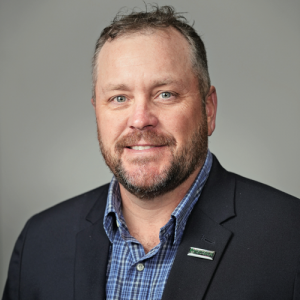
(Photo: John Pustai)
John Pustai
President, Northern Ohio GCSA
Superintendent, Highland Park GC, Chagrin Falls, Ohio
How was this year’s golf season in your region?
This year, in my opinion, was excellent. We started a little wet and finished a little wet, but everything in the middle was very busy. I try to visit as many courses as I can, and every course that I was on this year always seemed to do well.
How was the weather in your area?
I can’t complain. I would rather it be a drought than a monsoon. I can put all the water out I want, but I can’t take it off. Overall, it wasn’t a bad year. We did have to water a little bit there, but it wasn’t a big deal.
What was the labor pool like this year?
The labor pool is still a bit of an issue. Trying to get somebody to actually come in and do an interview that they committed to is one thing. Once they’re in, getting them to show up more than a couple of days and continuing to work is another. The jobs are out there. They’re just not being filled, because in this day and age, there are too many handouts, and people don’t have to work. It’s very challenging to try and find and retain good, quality guys on your team. I just hope it gets better.

Highland Park Golf Course Superintendent John Pustai says golf in northern Ohio benefitted from a good-enough weather year. (Photo: John Pustai)
Any notable success stories for your chapter or region this year?
We are beginning to celebrate our 100th year for our chapter. It all started here with us. GCSAA was started up here in Northern Ohio. We’ve been planning this celebration for 10 years, so we have a full slate of pretty special events.
What are your expectations for 2023?
Nothing but the best. It’s going to be a better year than last. Hopefully, things will loosen up on the labor front and
supply front. We just need the planet to open back up and for people to get back to it and start producing.
— Sydney Fischer
Michael Tardogno
Vice President, New Jersey GCSA
Superintendent, Tamarack GC,
East Brunswick, N.J.
How was this year’s golf season in your region?
I don’t know that I can speak for the region. I was pretty occupied with a construction project, but our golf on property was down a little bit from last year but was still up overall from prior years.
How was the weather in your area?
I’ve been in the business for over 20 years, and this is the driest and hottest combination of weather that I remember in my career. From some time in early June to some time in September, we only got 2 inches of rain in our area. The weather in Jersey was pretty brutal overall.
What was the labor pool like this year?
Better than the prior year, but we still struggled greatly. What we saw and what I know from talking to other colleagues at other courses, is that it’s been difficult hiring someone. There are lots of people applying that wouldn’t show up for interviews, or someone would show up for the interview and then not take the job. It’s been hard getting people to come in unless you ask over $15 an hour. $15 would barely get you phone calls. $16 was kind of the breaking point where you would start to get phone calls. $17 was more the number that would get people in the door, but not necessarily a hire.
At the golf course I’m at, we’re very close to some trucking and warehousing (operations), so we have a FedEx, UPS and Amazon building all within five miles of us, and they all pay $20 an hour. It’s been very difficult to get people to come here, but we did end up hiring more people than in the last two years after raising our hourly wage.
Any notable success stories for your chapter or region this year?
I know there are a lot of courses in the area doing construction, and there are a lot of courses being built in the area. A couple of golf courses reopened in the southern part of the state.
What are your expectations for 2023?
Next year, I hope it’s not as hot and dry. Other than that, it’s just construction for me.
— Sydney Fischer
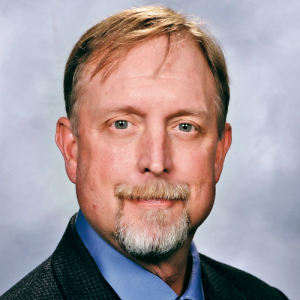
(Photo: Jeff Hansen)
Jeff Hansen
President, Lone Star GCSA
General Manager, Squaw Valley GC, Glen Rose, Texas
How was this year’s golf season in your region?
Another great season here in Texas, almost state-wide. Golf numbers have tended to stay up. Income is staying up.
How was the weather in your area?
We suffered through a drought in Texas, so we had to deal with that. Texas is hot and dry normally, but this summer was a little more extreme. We dealt with some complaints and the things that go along with an extreme summer.
What was the labor pool like this year?
That’s the No. 1 complaint nationwide. I work at a municipal course, I’m the general manager there. I was the superintendent previously. I know that in every aspect of the operation, we’re struggling to find people who want to work. I attended the (GCSAA) Chapter Delegates meeting, and this was a big topic of conversation. How do you attract people to golf course maintenance? We’re having to get creative. I’m hearing of places paying $25 an hour and giving bonuses if you stay on for a certain term. We have 36 holes and less than 20 people, that’s including assistants. Most of the staff is seasonal, part-time. It’s hard to get people, and I’m hearing that from everybody.
Any notable success stories for your chapter or region this year?
The successes I’m hearing about are the courses providing incentives to their crews. Friday meals for the staff or golf outings. If you have guys with longevity, that’s a success. There are courses with guys who have worked 20 to 30 years there. They’re reliant on these people.
What are your expectations for 2023?
We’ll continue riding this wave. The new golfers we got are younger, there are a lot more female golfers, there are a lot of golfers we’ve never seen before. My mission is to keep them attracted to what we have and keep them coming back. We’re solely relying on the cash register, so we need them to come back to the product we’re providing. Golf has become a little more noisy, if I can say that. Everybody now is just looking to have a great time doing it. So we’re trying to provide that good time while also providing the product for the old guard. We have to grow the game.
One of the big things is the First Green program that GCSAA put out. I’m going to try and host an event at our course. This is complementary to the First Tee program, we’re introducing to young people that there are jobs in golf maintenance and golf course operations — it’s not just the golfing side. With the cost of college today, not everyone wants to get that degree. We want people to understand that there are job opportunities on the golf course.
— Seth Jones
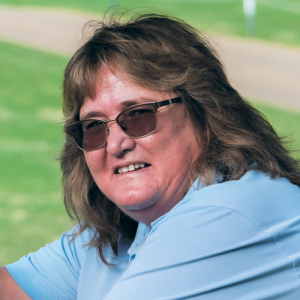
(Photo: Tami Jones)
Tami Jones
President, Arkansas GCSA
Superintendent, DeSoto Golf Club, Hot Springs Village, Ark.
How was this year’s golf season in your region?
This past year was a great golf season, we are still seeing high numbers of players and new faces on the course, which is great to see.
How was the weather in your area?
This year, the heat came on quick. I think we had maybe five weeks of spring and then straight into summer temperatures with no rain. We worked the irrigation system on overtime and had a hiccup this year with my pump station faulting out due to the heat. We had to place an A/C unit in the building, which helped keep the temperature down enough to make complete runs.
What was the labor pool like this year?
Very low. Working and living in a retirement community that operates eight golf courses, and having only two high schools to supply our seasonal help, makes competing for seasonals a daunting task every summer. Most of the courses ran under their targeted labor count, which, in turn, just pushes projects down the road or to be put on the back burner. We have also increased the starting pay to try and pull more in from the surrounding communities and to keep the labor we do have as we have had a big turnover with employees leaving for better-paying jobs. This has been a big impact on the club’s finances.
Needless to say, we have all started thinking outside the box to pull labor to complete projects along with normal operations as the standard for top playing conditions has not wavered.
Any notable success stories for your chapter or region this year?
This November, our chapter partnered with Hot Spring Country Club to host our first-ever First Green with Magnet Cove Elementary school’s fifth-grade class. We are all very excited to be a part of this event and hope to see more First Green events in 2023.
What are your expectations for 2023?
It’s kind of hard to have expectations, but I’m hoping for a couple more First Green events and that fertilizer prices don’t go through the roof.
— Christina Herrick
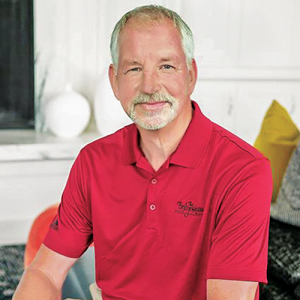
(Photo: Jim Loupee)
Jim Loupee
President, Indiana GCSA
Director of Grounds,
The Bridgewater Club, Carmel, Ind.
How was this year’s golf season in your region?
Once we got past the cool and wet spring, the golf season was extremely busy. Even with the slow start, our number of rounds will be up around 10 percent over last year.
How was the weather in your area?
Spring started cool and very wet. For the golfers and the turf, things didn’t start moving till mid-May. June through mid-July was extremely hot and dry and had the makings of a very long year. But things cooled down in August through September with some nice, timely rains. Fall has been awesome, with great temperatures and little rain. It will probably turn out to be just another normal year — if there is such a thing.
What was the labor pool like this year?
The labor market was a challenge. Finding individuals who want to work 5 1/2 days a week is tough. A lot of our younger staff members only work for 3 to 4 days a week to accommodate their schedule. There have been a lot of people coming and going.
Were there any notable success stories from your area/chapter this year?
Our association partnered with the Indiana Golf Association (IGA) to help us with our administrative needs. Like all volunteer associations, we struggled to get things done in a timely manner. With the IGA now running the day-to-day operations, we are better suited to focus on our long-term goals.
What are your expectations for 2023?
I think we are in for more of the same, with some of the good and some of the bad. The good is that golf will continue to grow, and the courses will be full. The bad is that the cost of products and equipment will continue to rise, and the labor market will continue to be a challenge.
— Rob DiFranco
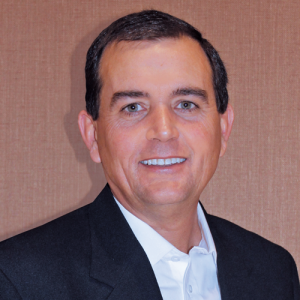
(Photo: Jeff Whitmire)
Jeff Whitmire, CGCS
President, Virginia GCSA
Williamsburg (Va.) CC
How was this year’s golf season in your region?
It was great. We had a dry year, but droughts are good for golf and we had a lot of play. I think most courses in the state experienced a lot of play again this year, like last year.
How was the weather in your area?
I have not seen a golf course in bad condition. Every golf course I’ve been to has been great. It was dry, and temperatures were pretty mild. We had a cool spring, and then it wasn’t too hot of a summer. The good thing was it was dry, so everybody was able to control their moisture. The weather was pretty good this year.
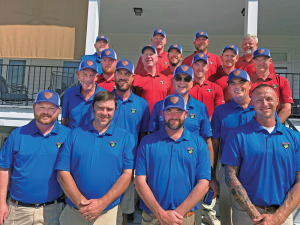
The Virlina Cup — which annually pits the Carolinas GCSA against the Virginia GCSA — was a great time for everyone involved, says Jeff Whitmire. The Carolinas won the Cup in ’22. (Photo: Jeff Whitmire)
What was the labor pool like this year?
It’s tight. I think it is improving a little bit. What I see is people just working smarter. Courses are filling some positions, but at the same time, they are being more efficient. I don’t know that we’ll ever be back up at the pre-COVID levels of staffing, but I do think people are investing more in their existing staff.
Any notable success stories for your chapter or region this year?
Christian Sain won GCSAA’s Ambassador’s Award, which was well deserved. We raised a record amount of money for Rounds 4 Research. Our events were all successful, we’re planning for our conference in December, and we have a great group of speakers.
What are your expectations for 2023?
I expect the volume of golf to continue to be high. I haven’t seen memberships slow down here at either of our facilities. We’re at capacity, and that’s the same story throughout the state. Waiting lists are back at private courses, and public courses are experiencing great years. There’s a lot of renovation work. The golf business is healthy again.
— Seth Jones









